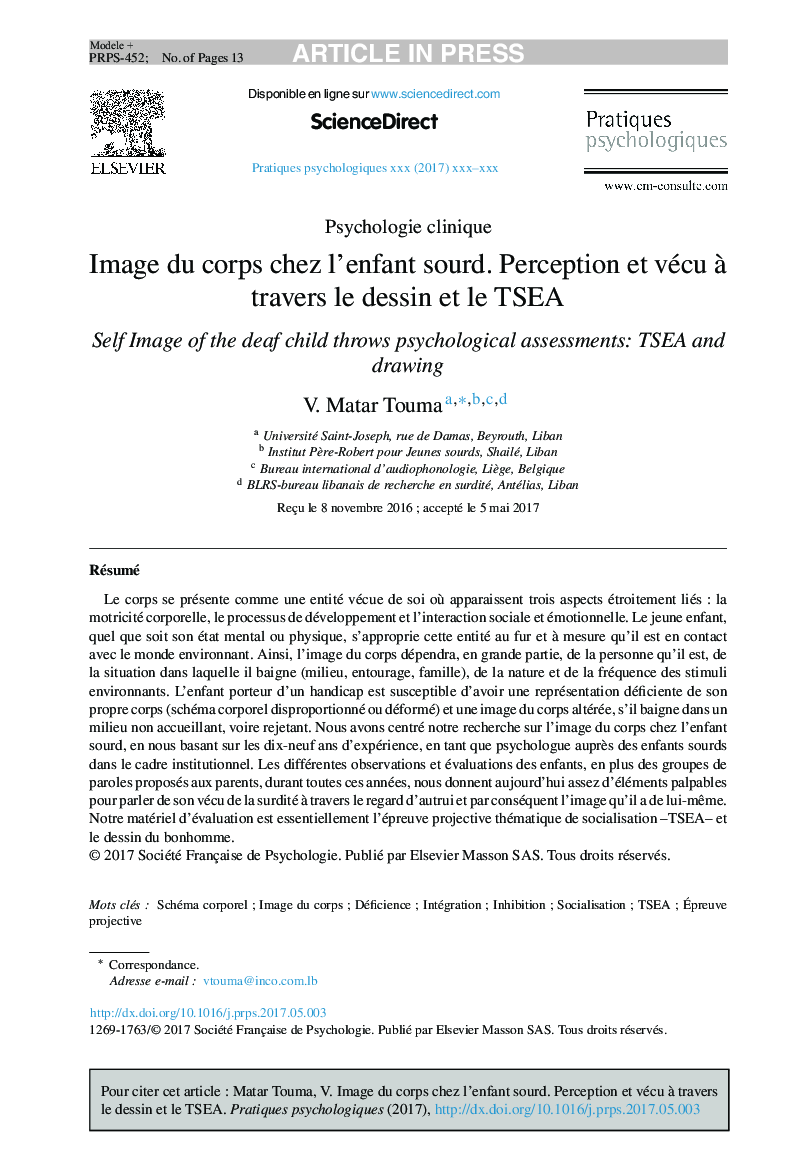| Article ID | Journal | Published Year | Pages | File Type |
|---|---|---|---|---|
| 7252412 | Pratiques Psychologiques | 2018 | 13 Pages |
Abstract
The body is as a living entity with three interrelated aspects: the physical motor skills, development processes, social and emotional interaction. The young child, regardless of his mental or physical condition, appropriates this entity when he is in contact with the surrounding world. Thus, the self-image will depend, in large part, on the person he is, the situation in which he lives (society, family), the nature and frequency of surrounding stimuli. A child carrying a handicap is likely to have a poor representation of his own self-image (disproportionate or deformed body) and an altered self-image, as far as he lives in a rejecting environment. In this paper, we have focused our research on how deaf children sees their self-image, based on our nineteen years of experience as a psychologist with hearing impaired children, in special schools. The various observations and assessments in this research, in addition to groups support offered to parents during all these years, give us today enough elements to show what kind of self-image the deaf child has of himself. Our assessment material was essentially thematic projective test of socialization -TSEA- and the drawing of the person.
Keywords
Related Topics
Social Sciences and Humanities
Psychology
Applied Psychology
Authors
V. Matar Touma,
